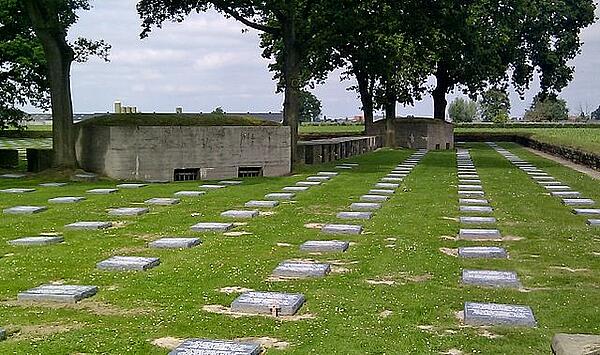Langemark War Cemetery
Langemark Cemetery is located just a few miles north of Ypres and is a resting place for German soldiers killed in and around the Ypres Salient during World War One.
There are very few German war cemeteries on the former site of the Western Front. Tyne Cot is another, but although it is larger in size than Langemark it contains more burials.

Langemark was a significant location during World War One. In October 1914, the German Volunteer Reserve Corps - made up of young students with just six weeks of training - attacked what was considered to be a weak British position at Langemark.
They advanced on British positions with their arms linked, singing patriotic songs about Kaiser Wilhelm II. The British Expeditionary Forces immediately cut them down in a stream of fire so brutal and relentless that their Lee Enfield rifles were mistaken for machine guns. In total, 1,500 Germans were killed and 600 were taken prisoner.
This moment marked the start of the war around Langemark and as a result Langemark Cemetery is often referred to as the ‘Students Cemetery’ - reflecting the 3,000 students who died fighting in the area between October and November 1914 and were later buried there.
Burials of the German dead began in 1915 but between 1916 and 1918 they increased as a result of a directorate from the German High Command. In total, 44,061 men are buried at Langemark, but just 19,378 of these are buried in named graves.
There are parts of the cemetery that are still scarred from the war due to the fact that the Ypres Salient saw a huge amount of fighting, and the three German bunkers that are still in the cemetery reflect this. In the 1920’s, the German Burial Service was given permission to renovate German cemeteries in Flanders. There were also an additional 10,000 bodies brought to Langemark in the 1930’s from other local burials sites. Where the names of the soldiers are not known, this fact is stated on the headstone.
MLA Citation/Reference
"Langemark War Cemetery". HistoryLearning.com. 2025. Web.
